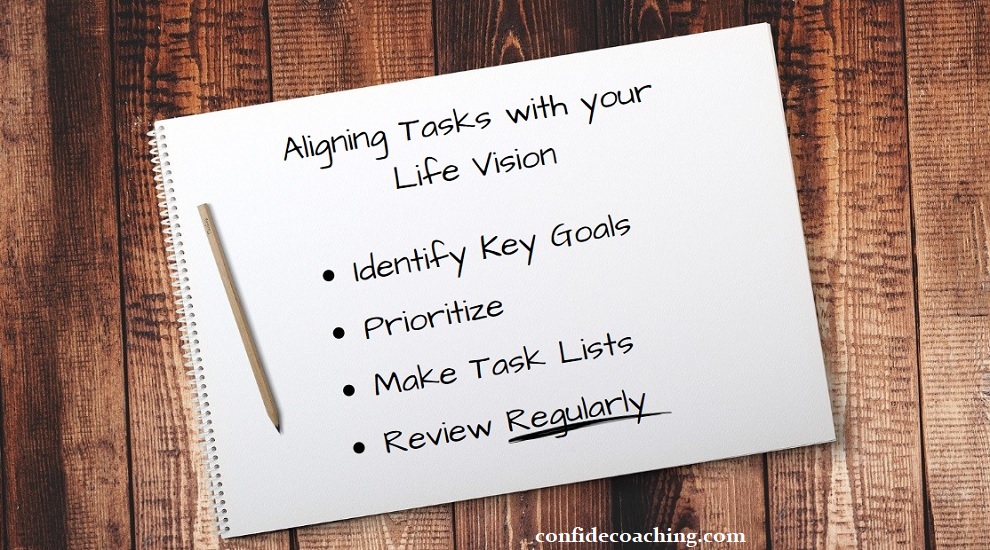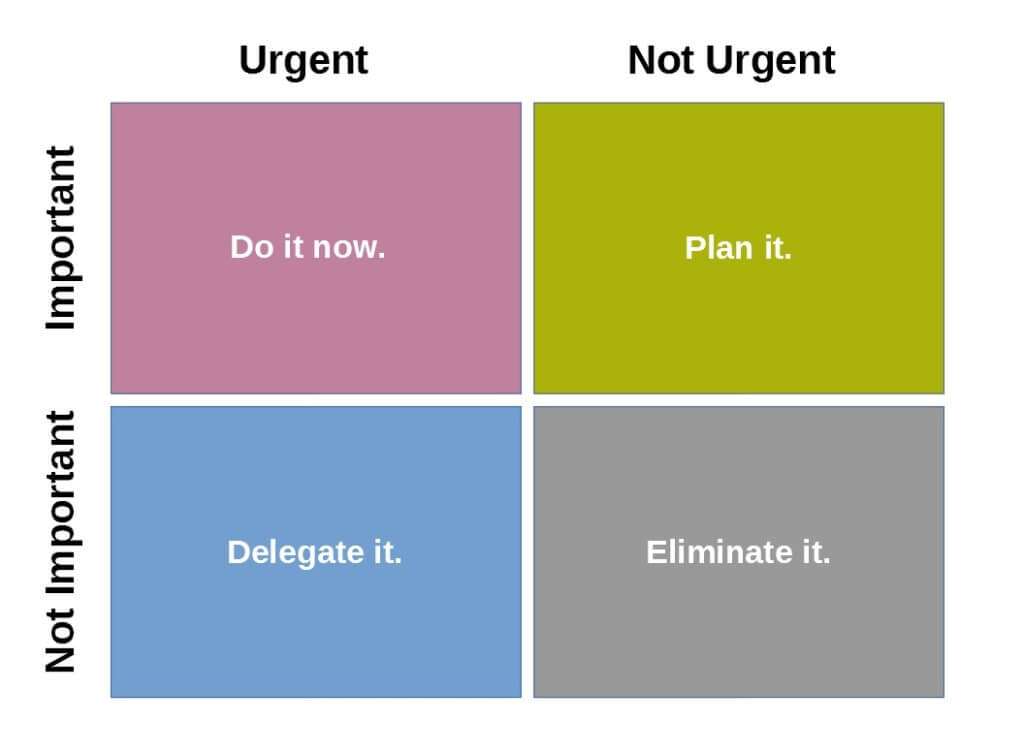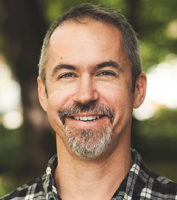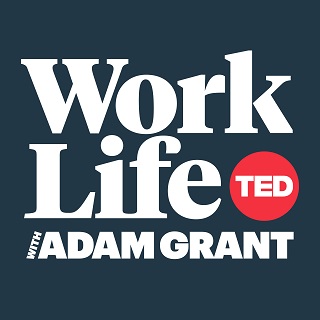
Introduction to Re-thinking Productivity
Productivity. Time management. These are concepts as old as the hills and deeply ingrained in our cultural consciousness. Traditionally, productivity is the measure of how much work can be accomplished within a given time frame. The more tasks are completed, the more productive you are perceived to be. Time management, on the other hand, is the strategy employed to maximize the use of time, often visualized in neatly organized schedules, task lists, and planners. A person who manages their time well is seen as organized, efficient, and successful.
However, in our relentless pursuit of productivity and our obsession with time management, we have started to fall into a dangerous pitfall. We are beginning to equate being busy with being productive, leaving no minute of the day unaccounted for. We push ourselves to tick off all the tasks on our ever-growing to-do lists, often at the cost of our mental health, personal relationships, and even the quality of our work.
But what if we have been looking at productivity and time management all wrong? What if, instead of focusing on accomplishing more tasks, we began prioritizing those tasks that align with our long-term life vision? It’s time we introduce a new perspective on time management and productivity—one that is less about the clock and more about the compass.
This new perspective shifts the focus from quantity to quality. It encourages you to question whether your tasks are bringing you closer to the life you envision for yourself or just filling your hours with busy work. It’s not about doing more in less time; it’s about doing what’s meaningful with the time you have.
Productivity, in this new light, isn’t about running the rat race faster but about knowing which race you want to run. Similarly, time management is not about squeezing more tasks into your day but about judiciously choosing tasks that contribute to your long-term vision.
In the upcoming sections, we will delve deeper into this refreshing take on productivity and time management. We will discuss how understanding and aligning with your life vision can lead to a more fulfilling and less stressful life, and explore creative techniques that help manage time effectively without contributing to burnout. Join us as we redefine productivity and time management, paving the way to a more balanced and meaningful life.
Understanding the Modern Productivity Paradox
The concept of productivity has changed dramatically over the centuries. Once tied to physical labor in fields and factories, productivity became more nuanced with the advent of knowledge work. Now, in our hyperconnected age, productivity has taken on a new dimension. It’s become entwined with time management and optimization to such a degree that our lives often feel like a ceaseless quest to accomplish more tasks in less time.
But herein lies the modern productivity paradox. In our drive to be more productive, we’ve put ourselves on a treadmill that never stops. We’ve adopted an excessively optimized way of managing time, packing our schedules to the brim with tasks and activities. It’s as if every minute not spent ‘doing’ something is a minute wasted.
However, this relentless pursuit of productivity has severe consequences. Research has shown that overly optimized time management can lead to heightened stress levels, deteriorating mental health, and disrupted personal relationships. When our lives are ruled by task lists and schedules, we can lose sight of the bigger picture and neglect the activities that make life enjoyable and meaningful.
The term “productivity burnout” has emerged to describe the state of emotional, mental, and physical exhaustion caused by prolonged and excessive striving for productivity. It manifests in various ways, such as chronic fatigue, insomnia, a lack of motivation, increased irritability, and difficulty concentrating. In severe cases, productivity burnout can lead to anxiety and depression, underlining the pressing need to address our unhealthy obsession with productivity.
The irony of the modern productivity paradox is clear: our attempt to accomplish more can leave us feeling depleted, overwhelmed, and unsatisfied. Therefore, it’s time we re-evaluated our relationship with productivity and time management. In the next sections, we’ll explore how to do this by aligning our tasks with our long-term life vision and adopting more sustainable, creative time management techniques. This approach will help us find balance, prioritize what truly matters, and move towards a healthier and more fulfilling way of living and working.
Life Vision: The Core of Productivity
The concept of ‘Life Vision’ may sound abstract, but it essentially boils down to this: What kind of life do you aspire to live? What are your long-term goals and aspirations? What gives your life meaning and purpose? Your Life Vision is a reflection of your core values, your aspirations, and the things that you find deeply satisfying and fulfilling.
In traditional productivity models, the significance of this Life Vision is often overlooked. But in our new perspective, it’s at the very heart of time management. Why? Because when your daily tasks and long-term goals are aligned with your Life Vision, you’re not just working to complete a checklist; you’re working to build the life you desire. This alignment can lead to not just increased productivity, but also a greater sense of fulfillment and satisfaction.
Identifying what is meaningful and important in your life is a powerful step towards better time management and increased productivity. When you know what matters most to you, you can prioritize those tasks that contribute to your Life Vision and let go of those that don’t. You save time and energy that you can then invest in what truly matters.
So, how can you identify your Life Vision? Here’s a simple exercise. Find a quiet place, free of distractions, and take a few minutes to reflect on these questions:
- What are my core values? What principles do I hold dear and want to guide my life?
- What are my long-term goals? Where do I see myself in five, ten, or twenty years?
- What activities make me lose track of time? When do I feel most alive and fulfilled?
- What positive impact do I want to make in my personal life, my community, or the world at large?
Take your time to think about these questions. Write down your thoughts. Don’t worry about making it perfect; this is a starting point. Your Life Vision may evolve as you grow and learn, but having a clear idea of where you’re heading will help guide your decisions and make your time management more effective.
Your Life Vision is the compass that guides your productivity. Aligning your tasks with this vision makes your work meaningful, enhances your productivity, and brings you closer to the life you aspire to live. So, start envisioning your future today, and let this vision transform your approach to productivity and time management.
Aligning Tasks with Your Life Vision
The importance of aligning tasks with your long-term goals and Life Vision cannot be overstated. When tasks align with your vision, they are no longer just items on a to-do list; they become stepping stones toward your desired future. You’re not merely ‘staying busy’; you’re making progress. This alignment creates a sense of purpose in your daily activities, making you more motivated and focused, and enhancing your overall productivity.

So, how can we align our tasks with our Life Vision? Here are some practical steps:
- Identify Key Goals: Break down your Life Vision into smaller, more manageable goals. These should be the larger objectives that you want to achieve in the coming months or years and that directly contribute to your vision.
- Prioritize: Once you have your key goals, prioritize them. Ask yourself: Which of these goals is most critical to your Life Vision? Which ones will have the most significant impact?
- Create Task Lists: For each of your prioritized goals, create a list of tasks that will help you achieve this goal. Be as specific as possible.
- Review Regularly: Regularly review your tasks and goals to ensure they stay aligned with your Life Vision. This should be a dynamic process, allowing for adjustments as you evolve and your vision changes.
The concept of “impact tasks” is crucial in this alignment process. Impact tasks are those tasks that directly contribute to achieving your Life Vision. They have a clear and meaningful impact on your long-term goals, making them of higher priority than other tasks. When planning your day or week, make sure these impact tasks are given top priority.
It’s essential to remember that aligning tasks with your Life Vision doesn’t mean eliminating all tasks that don’t directly contribute to this vision. Life inevitably involves routine chores and obligations. The goal is to ensure that impact tasks are given the time and focus they require and that your time isn’t monopolized by lower-value tasks. With this alignment, you can make steady progress toward your Life Vision, ensuring that your productivity and time management are not just efficient but meaningful and fulfilling.
Creative and Unusual Time Management Techniques
Traditional time management techniques, while helpful, can sometimes feel rigid and inflexible. This rigidity can, paradoxically, lead to inefficiency and even burnout. Therefore, it may be beneficial to explore non-traditional techniques that allow for greater flexibility and adaptability, making time management a more natural and stress-free process.
Let’s look at some conventional techniques first. Time blocking, the Pomodoro Technique, and the Eisenhower Matrix are all effective in managing time. However, they can be tweaked for a less rigid approach.
Time blocking involves dividing your day into blocks of time, each dedicated to a specific task or activity. While this technique is efficient, it may feel overly structured. A more flexible approach could be to block out larger chunks of time for categories of tasks instead of specific tasks, allowing you to choose from a list of similar tasks within each block.
The Pomodoro Technique advocates for intense focus on a task for 25 minutes, followed by a 5-minute break. While effective, this might not work for everyone or for all tasks. Some tasks may require a longer period of immersion, and some people may find it hard to focus intensely for even 25 minutes. Tweaking this technique to fit your personal rhythm—longer or shorter focus periods, longer breaks—can make it more effective.
The Eisenhower Matrix, also known as the Urgent-Important Matrix, is a method of prioritizing tasks by their urgency and importance. This technique can lead to over-emphasis on tasks deemed ‘urgent’. A tweak here could be to ensure ‘important’ tasks, those that contribute to your Life Vision, are not continually pushed back due to seemingly ‘urgent’ tasks.

Categorizing tasks into these boxes can really help reduce stress, not just be more efficient.
Now, let’s explore some unconventional time management techniques.
Energy Management involves scheduling tasks based on your natural energy levels throughout the day. You might reserve high-energy periods for complex tasks and use low-energy periods for routine or less demanding tasks. This approach is more flexible and attuned to your body’s natural rhythm.
Mono-tasking is the practice of focusing on one task at a time instead of multitasking. It encourages deeper concentration and can lead to higher quality work. It also helps prevent the mental fatigue caused by constantly switching between tasks.
Time Off for Creativity is the idea of setting aside regular, unscheduled time for creative activities or simply to let your mind wander. This technique recognizes that creativity often strikes when the mind is at ease, not when it’s being forced. It can lead to unexpected insights and a refreshed mind, ready to tackle tasks more effectively.
These creative and unusual time management techniques are all about working with your natural rhythms and preferences, not against them. By making time management more flexible and natural, we can prevent burnout, increase productivity, and make progress toward our Life Vision in a more balanced and enjoyable way.
The Role of Rest and Recharge in Productivity
We often perceive productivity as a non-stop journey toward accomplishing goals. But here’s an often neglected truth: rest is an essential part of the productivity equation. It’s not a deviation from the path to success, but a crucial component of the journey.
Rest, downtime, and self-care are invaluable in maintaining productivity levels and warding off burnout. Just as a car needs regular refueling to continue running, our bodies and minds need rest to maintain performance and vitality. Constantly pushing ourselves without taking time to recharge can lead to productivity burnout, which, ironically, renders us incapable of achieving our goals.
There are many ways to incorporate relaxation and rejuvenation into our daily routines.
Regular Sleep is a non-negotiable component. Ensure you’re getting 7-9 hours of sleep every night.
Physical Exercise is another essential way to recharge. Whether it’s a brisk walk, yoga, or a high-intensity workout, find an activity you enjoy and make it a part of your routine.
Mindfulness Practices, like meditation or journaling, can help you unwind and manage stress. They can also enhance focus and clarity, making your working hours more productive.
Lastly, remember to take Regular Breaks during your workday. Short breaks can refresh your mind and prevent fatigue.
In addition to these, there’s a concept called “creative rest“. This isn’t just about sleeping or lounging on the couch. Creative rest involves engaging in hobbies, passions, or activities that rejuvenate your mind and spark creativity. This could be painting, playing an instrument, gardening, reading—anything that brings you joy and allows your mind to wander freely.
These activities aren’t just ‘fun’—they play a critical role in maintaining mental health, fostering creative thinking, and ultimately enhancing productivity. They serve as a source of inspiration and a conduit for new ideas. They’re a space where you can explore, experiment, make mistakes, and learn—without the pressure of deadlines or expectations.
Remember, productivity isn’t about relentless hustle. It’s about working smart, not just hard. Rest and recharge aren’t antithetical to productivity—they’re an integral part of it. It is time to redefine productivity to include rest, recharge, and creative rejuvenation. This will help us avoid burnout, enhance our well-being, and ultimately make our journey toward our Life Vision more enjoyable and sustainable.
Case Studies and Real-life Applications
To understand the transformative power of aligning time management with Life Vision, let’s look at two real-life examples. These are based on my experiences as a life coach with clients’ names changed for privacy.
Case Study 1: Christine, the Overwhelmed Entrepreneur
Christine is a driven entrepreneur with a vision of building a successful eco-friendly business. However, she found herself constantly swamped with tasks, working long hours, and feeling on the brink of burnout. Her time management was based on tackling the most urgent tasks, but she felt like she was running in circles without making significant progress toward her vision.
We worked together to define her Life Vision and broke it down into key long-term goals. We then aligned her daily tasks with these goals, identifying impact tasks that contributed most directly to her vision. We also incorporated energy management techniques, scheduling her most important tasks during her peak energy periods.
The results were transformative. Christine reported feeling less overwhelmed and more in control. Her work hours decreased, but her business started making significant strides toward her vision. She began enjoying her work again and felt that her life had regained balance.
Case Study 2: David, the Creative Burnout
David is a writer suffering from creative burnout. He felt pressured to be constantly productive and was struggling to write anything meaningful. He was fixated on managing his time effectively, but this seemed to stifle his creativity rather than boost it.
Together, we shifted his perspective on productivity. We identified his Life Vision, which involved not only writing but also creating meaningful work that resonated with readers. We introduced the concept of ‘creative rest’, scheduling regular time for activities he enjoyed and that sparked his creativity, like reading, walking in nature, and painting.
The impact of these changes was profound. David’s writing began to flow again. He found that his ‘rest’ periods often led to his most creative ideas and insights. Not only was he writing more, but his work also became more aligned with his vision and resonated with his readers. He reported feeling less stressed, more creative, and more satisfied with his work.
These cases show that aligning time management with your Life Vision and adopting creative, flexible approaches can lead to impressive results. Not only can it enhance productivity and prevent burnout, but it can also lead to a more balanced, fulfilling life that aligns with your core values and aspirations.
Take Home Message
In our relentless pursuit of productivity and efficient time management, we often lose sight of why we’re striving to be productive in the first place. Aligning your productivity with your personal Life Vision reintroduces purpose and meaning into your daily tasks, transforming them from tiresome chores into stepping stones toward your dream life.
I urge you to reconsider your current approach to productivity and time management. If you find yourself overworked, stressed, and perpetually chasing after time, it may be an indication that your tasks and your Life Vision aren’t aligned. Remember, true productivity isn’t just about doing more—it’s about doing what matters.
Take some time to explore the techniques and strategies we’ve discussed. Identify your Life Vision and the impact tasks that will take you there. Experiment with the time management techniques that resonate with you—be it energy management, time blocking, or the rejuvenating power of creative rest. Above all, remember that rest and recharge aren’t the enemies of productivity—they’re vital allies.
So, embark on this journey of redefining productivity. Step away from the conventional, rigid view of time management, and towards a more flexible, purposeful approach. In doing so, you’ll not only enhance your productivity and ward off burnout, but you’ll also make progress toward a life that resonates with your deepest aspirations and ideals.
Your Life Vision awaits—let’s make every moment count in the journey toward it.
Additional Resources
As you embark on your journey towards redefining productivity and healthier time management, there are numerous resources that can guide you and offer further insights. Here are some recommendations:
Books:
- “Essentialism: The Disciplined Pursuit of Less” by Greg McKeown. This book dives into the concept of doing less but better, aligning perfectly with our discussion of focusing on impact tasks.
- “Deep Work: Rules for Focused Success in a Distracted World” by Cal Newport. This book provides strategies for maintaining focus in an increasingly distracting world, resonating with our concept of mono-tasking.
- “The Power of Full Engagement: Managing Energy, Not Time, Is the Key to High Performance and Personal Renewal” by Jim Loehr and Tony Schwartz. This book delves into the concept of managing energy instead of time.
Podcasts:
- “The Productivity Show” by Asian Efficiency. This podcast covers a wide range of productivity topics, including time management, goal setting, and work-life balance.
- “WorkLife with Adam Grant”. This podcast explores ways to make work not suck, including strategies for being productive and efficient.
Apps and Tools:
- Todoist (https://todoist.com/ ): A task management app that allows you to organize tasks by categories and priorities, which can help align tasks with your Life Vision.
- Tog (https://toggl.com/ ): A time tracking tool that can help you identify where your time goes, useful for tweaking your time management techniques.
- Headspace (https://www.headspace.com/): A meditation app that can aid in mindfulness practices, helping with rest and rejuvenation.
- Forest (https://www.forestapp.cc/ ): This app encourages focus and mono-tasking by growing a virtual tree, which dies if you exit the app to do something else on your phone.
Each of these resources offers valuable insights and practical tips to help you on your journey towards healthier, more purposeful productivity and time management. Use them to fuel your journey towards your Life Vision, remembering that it’s not about doing more—it’s about doing what matters.

Paul Strobl, MBA, CPC
Owner of Confide Coaching, LLC
Paul is a Master Life Coach for individuals, executives and business owners. Originally from Houston, Texas, he has been location independent for most of his adult life. He currently resides in the Rhodope Mountains of Bulgaria near the Greek border with his brilliant wife, 13-year-old stepson (officially adopted in 2021!) and a Posavac Hound rescue.
References
Sapolsky, R. M. (2004). Why Zebras Don’t Get Ulcers: The Acclaimed Guide to Stress, Stress-Related Diseases, and Coping. St. Martin’s Griffin.
Schwartz, B. (2004). The Paradox of Choice: Why More Is Less. Ecco.
Nagoski, E., & Nagoski, A. (2019). Burnout: The Secret to Unlocking the Stress Cycle. Ballantine Books.
Deci, E. L., Vallerand, R. J., Pelletier, L. G., & Ryan, R. M. (1991). Motivation and Education: The Self-Determination Perspective. Educational Psychologist, 26(3&4), 325-346.


